The Bivacco Buffa di Perrero is an incredible unique shelter in the Dolomites. I climbed to it solo recently, and here is my detailed report about the tour.
Most people climb to the Buffa di Perrero shelter by starting from the Passo Tre Croci above Cortina d’Ampezzo. You can make it a round tour by following ferrata Ivano Dibona in clockwise or anti-clockwise direction. It is always open and if you plan to sleep there, make sure to have a warm sleeping bag and a sleeping pad.
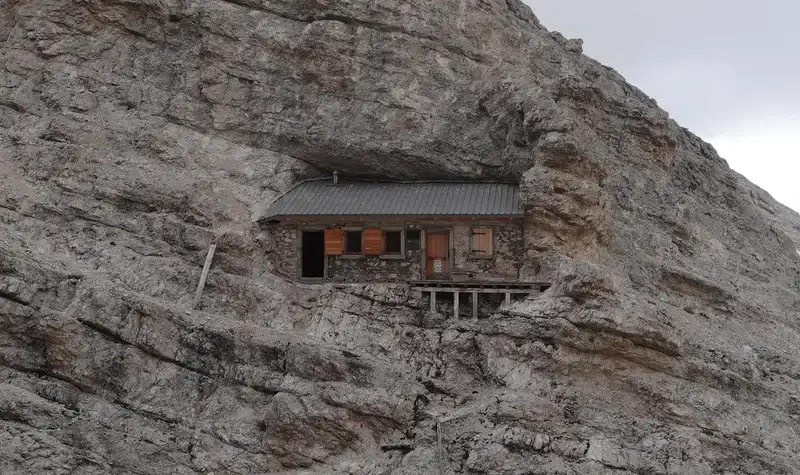
What is Buffa di Perrero bivouac?
The Bivacco Buffa di Perrero is a new alpine shelter, re-built on the place of a military barrack from the WWI on the high cliffs of Monte Cristallo in the Dolomites, Italy.
The bivouac was named after the colonel Carlo Buffa di Perrero, see the picture, the commanding officer of the military units who were defending the front lines on those peaks during the WWI.
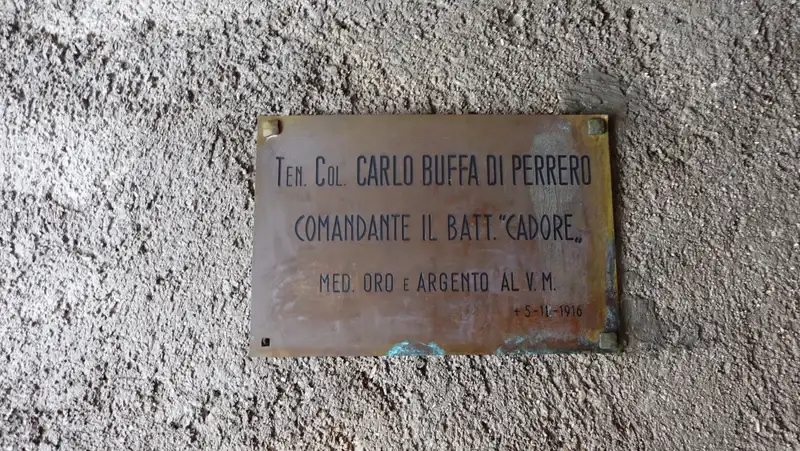
The place was a ruin, just one out of many military barracks that are still present at many places on the route. But as you can read on the table that is there on the wall (shown in the picture below), it was completely rebuilt in 2022. All the process of re-building the bivouac is described in this page.
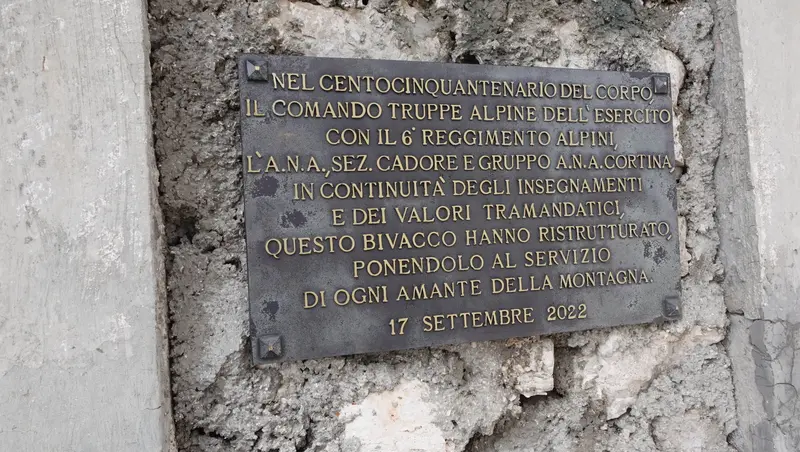
Bivacco Buffa di Perrero location
The shelter is directly under Cima Padeon (2859 m; 9380 ft) which you can easily climb once you get there.
- Coordinates, latitude & longitude: 46.584717 N/12.182667 E.
- Elevation: 2760 m (9055 ft).
- Normal route difficulty: moderate ferrata & walk-up.
- Height difference to climb from the car parking: 955 m (3133 ft).
- Useful map: Tabacco number 03, Cortina d’Ampezzo e Dolomiti Ampezzane. 1:25000.
How to get to Buffa di Perrero?
The most convenient car access point is the Passo Tre Croci above Cortina d’Ampezzo. It is at the elevation of 1805 meters (5922 ft).
You will use the same free parking if you plan to visit the lake Sorapis. The latter is a very popular place and many people park in the area, so make sure you get there early if you want to be sure to find a parking place close enough to the beginning of the route.
Here you have the map I created, with the route which I followed. It is zoomable so you can see all the details. The red line shows the upper part of my route where you have many sections equipped with cables. If you zoom out, you will see all access roads.
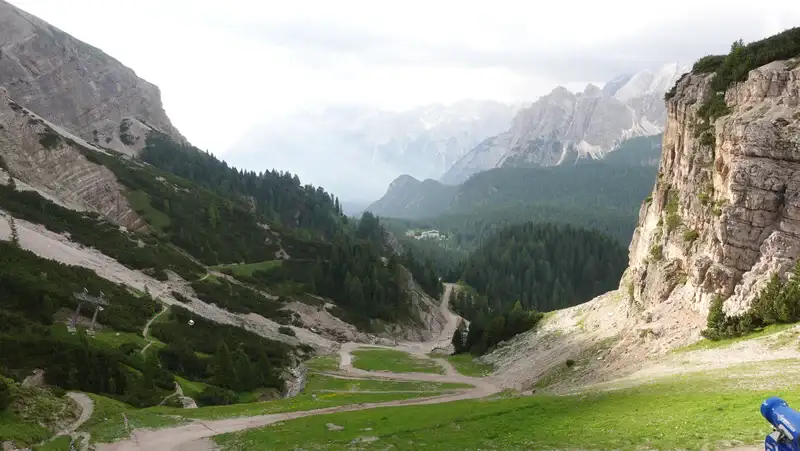
Note also that there is a lift station Rio Gere down the road in the direction of Cortina, zoom into the map above to see it. You can take it to make the tour easier, it will get you to a higher start point in the Padeon valey at Rifugio Son Forca which is shown in the picture below.
If you are on a round tour, then from that area close to the upper lift station you can go both clockwise and anti-clockwise.
The anti-clockwise tour will get you through a very very steep and unpleasant couloir Forcella di Staunies, with lots of lose rock visible in the picture. Note that it is much steeper in reality.
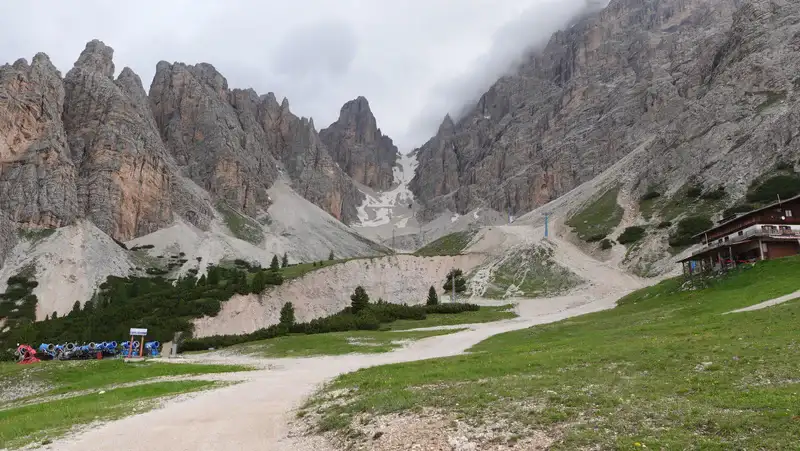
This is the direction to the abandoned and empty Lorenzi hut, just to know so that you do not count on water or food there.
When I was there, the couloir was under snow, so I went clockwise. But I have experienced it a few weeks later on my tour to Monte Cristallo di Mezzo.
If you decide to walk the tour clockwise, you will continue walking through the woods for a while, without gaining elevation.
At some point, close to a cabin in the forest, there will be a place where you can refill your bottles. After that you are on a terrain with lots of loose rock (the picture below), but not very hard because the route goes diagonally to the beginning of the ferrata section.
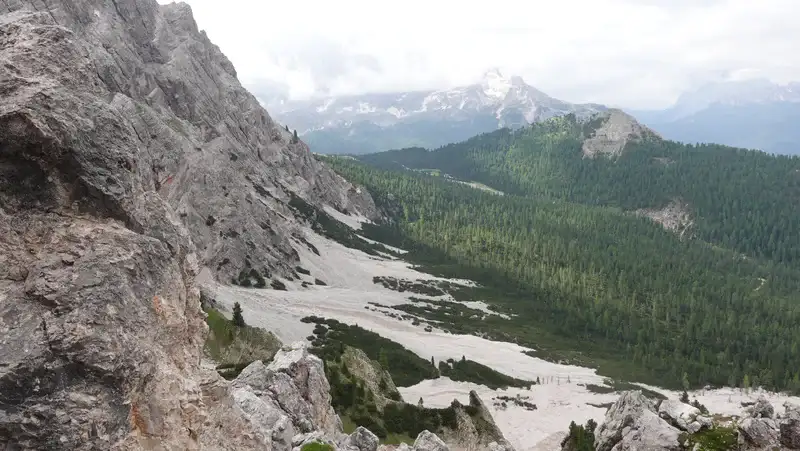
The ferrata starts a bit hard, below you can see how it looks, but this is so only for a few cable sections. After that this is a walk up again.
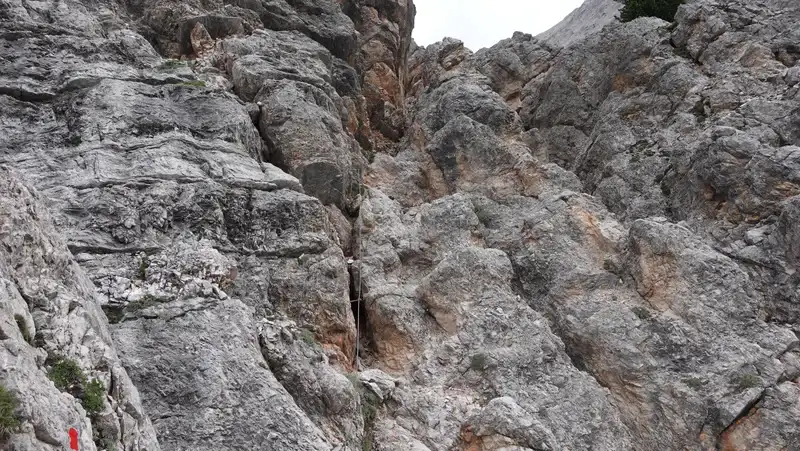
Much higher you will come to a point where yet another route from the north joins your route. It comes from the main road and Rifugio Ospitale which is at 1491 meter (4892 ft) of elevation. Observe that this north-west approach is on the maps also under the name ferrata Ivano Dibona.
You are already at a high elevation and after that follows a long but pleasant section over numerous but easy ledges with many fixed cables.
There are a few exposed parts here too, but this is a very easy ferrata in every sense, with many horizontal sections. The picture below shows one of them.
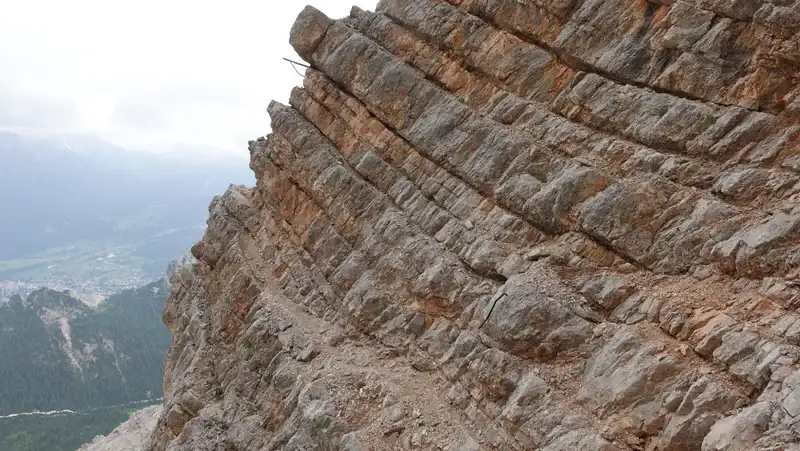
The picture below shows this particular area, the route goes almost horizontally through the middle of the cliffs in the picture. There are many fortifications here from the WWI, with barbwire, barracks, etc.
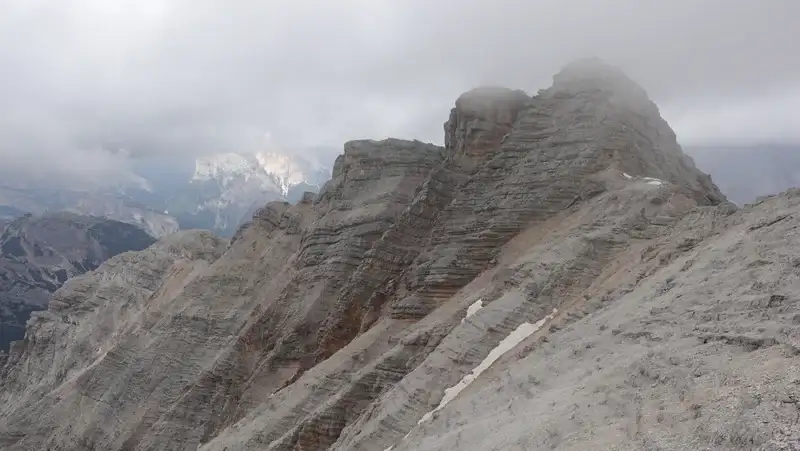
The bivacco will suddenly appear in front of you. Here you can see my first view of it, and I can tell you the view was not disappointing, this is an incredible place:
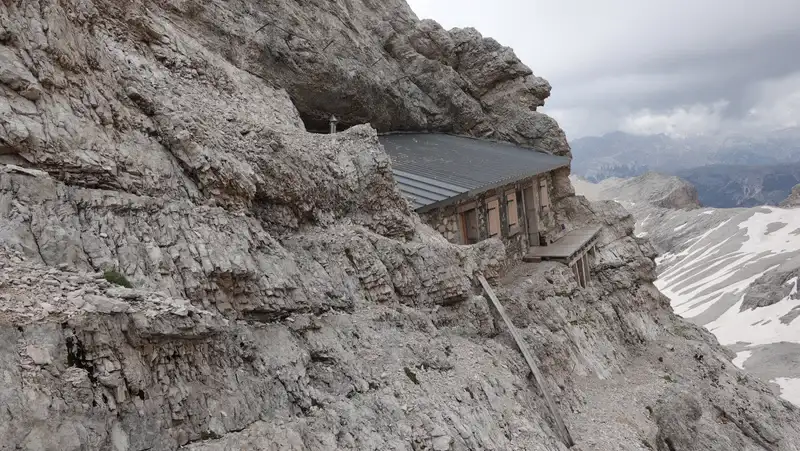
My tour
My primary goal for the day was to get to the shelter. The round tour ferrata, or just a part of it, is an attraction itself. For tourists, this holds mainly for its part above the mentioned Lorenzi hut, where there is a long suspension bridge, ladders, etc.
But this part is at a higher elevation than the bivouac, and I knew that the mountain in that part was still under the snow. There was a good chance that I would not be able to pass it if the cables were in snow or ice.
This is why I knew I had to go clockwise, to visit the bivacco and if possible to continue and make a round trip. Otherwise, to return back the same way.
Yet another reason for this decision was the weather, the picture below shows how it was. I had all the usual rain protection stuff with me, but I did not feel comfortable at such elevation with such clouds around.
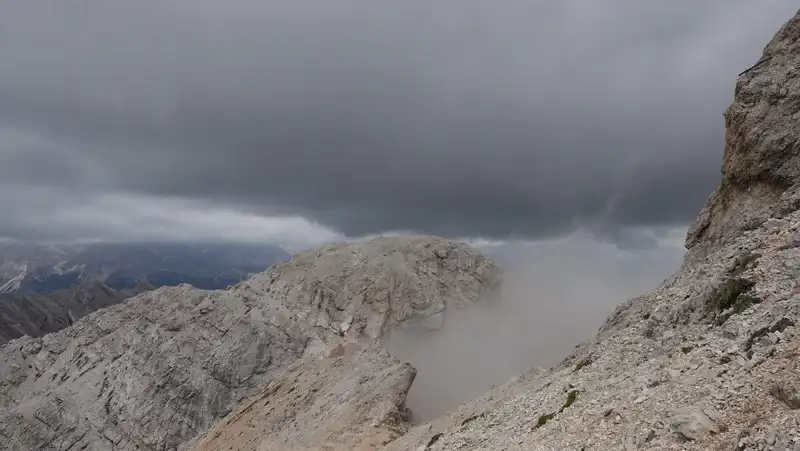
Later, I realized that the cables above the bivacco were indeed under the snow, and I was not able to continue. So my previous decision was correct.
Anyhow, I started from the Tre Croci pass at 6:20 AM, and around 6 hours later I was at the shelter. It took me far more time than I expected.
I was completely alone on the mountain all the day. Most likely this was partly because of the weather, and more importantly due to the fact that the ferrata was officially closed due to the snow; this is what I found on the site of guides in Cortina.
Knowing that I would definitely not continue to the even higher elevation, I was quite relaxed. This is why I stayed in the shelter for almost one hour, and then descended the same way back. I even climbed the Cima Padeon (2869 m) which is directly above the refuge, it is visible in the picture below.
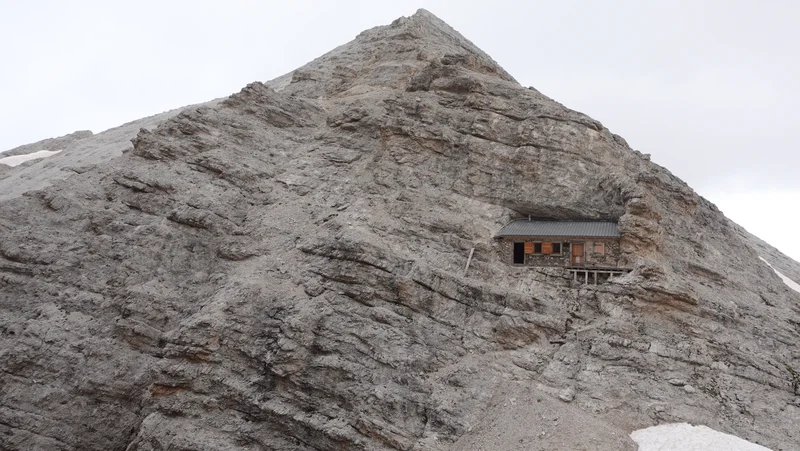
This picture I took by descending a bit and walking a few meters in the direction of the Lorenzi hut. But my actual ascend and descend route is over the ridge on the left side.
I have seen such a picture in the past, and I knew that sooner or later I would visit this place. And as you see, I did it.
The beauty of this area is hard to describe, I am not strong with words, and this is not my native language. I can only hope that you can realize it from the pictures in this post.
Half-way down, I met a group of three people going up, one woman and two men. It turned up they were from Slovenia, so we did not have to speak in English.
They were on a sad mission, relatives of a girl that had a tragic accident earlier on the mountain. They were going to light a candle at the memory table that was somewhere above on the mountain.
They asked me if I have seen the table, and I said no. So they continued up, and I kept going down the mountain. Later when I was already close to the forest area, I could see them descending, not sure if they did what they planned or not.
In my video below you can vee more details about this tour, please have a look:
Buffa di Perrero bivouac inside view
When I was there, the bivouac was less than two years old. Clearly, everything was new and clean, and the place had a pleasant smell of wood.
The picture shows the sleeping platforms, it is in three levels, with enough place for 8 people in total. Note that there are no mattrasses, pillows, and blankets.
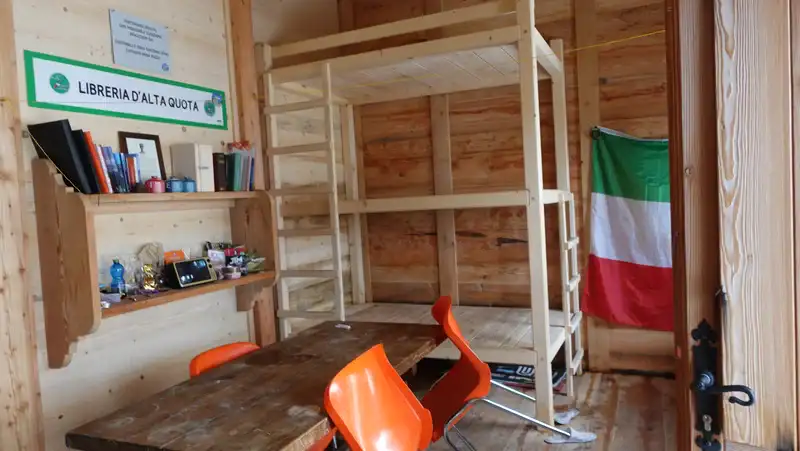
The wood burning stove looks beautiful, but there was no wood when I was there. Most likely this is typically so.
My guess is you could pick up and carry up some pieces of 100-years old wood from the WWI trenches around the route. But those are wet and half-rotten, and there is no way to make a fire with them unless they are dry.
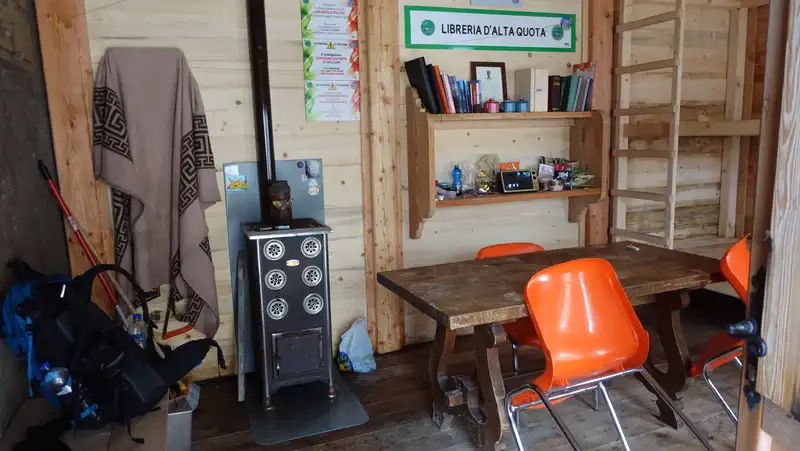
I kept the windows open to let fresh air in. Namely, there is a problem here, lots of moisture. This is because the corner around the stove is completely wet.
I hope that people in charge will realize this soon and fix the leaking points that are clearly around the pipe opening on the roof. It would be pity if such a beautiful and pleasant place is left to rotten.
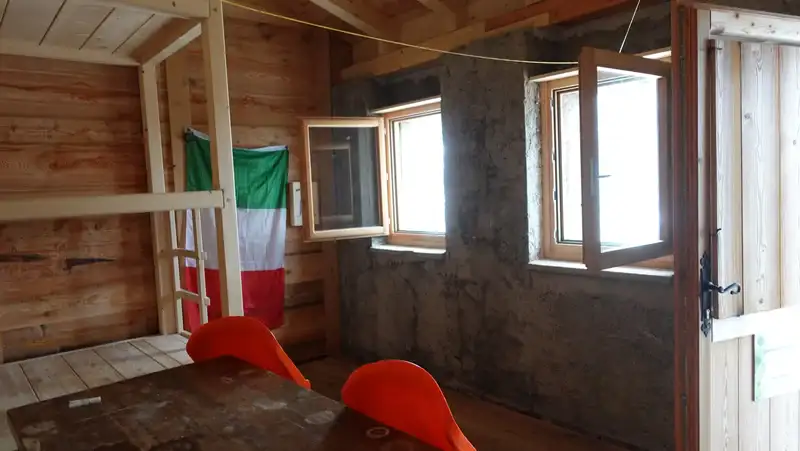
Equipment, supplies, accommodation
You have seen already that this tour includes lengthy ferrata sections. Therefore, the usual ferrata trio is necessary, a climbing helmet, a harness, and a Y-rope.
I had them with me and carried all in my Mammut Lithium 40 backpack. For that occasion I used Mammut Sapuen boots. Both of these new pieces of equipment I used as a part of my testing.
As usual, I used a pair of Komperdell trekking poles, plus a few pieces for rain protection.
Regarding supplies, Cortina d’ Ampezzo is most of the time in sight, so this is the main place to get food and also to find accommodation.
Final thoughts
In summary, my journey to Bivacco Buffa di Perrero is an unforgettable experience in the majestic Dolomites. This alpine shelter, perched on the cliffs of Monte Cristallo, offers not just a glimpse into history but also a unique mountaineering experience.
The stunning landscapes and historical significance of the area are sure to leave a lasting impression. Despite the challenges posed by the weather and the terrain, the beauty and tranquility of this remarkable place make the effort worthwhile.
As you plan your trip, remember to equip yourself properly and respect the natural and historical heritage that makes Bivacco Buffa di Perrero so special.
For more texts related to the same area, please see in this list, in particular check my text abut the nearby Monte Cristallo di Mezzo. I have been there a number of times, and there will be many more texts added. So bookmark this site and come again.
Please join us at our Facebook group Dolomites Visitors Hub. Let me know if you have questions or comments, there is a comment box below. Subscribe to my weakly newsletter and stay informed, the subscription form is given below.
Leave a Reply